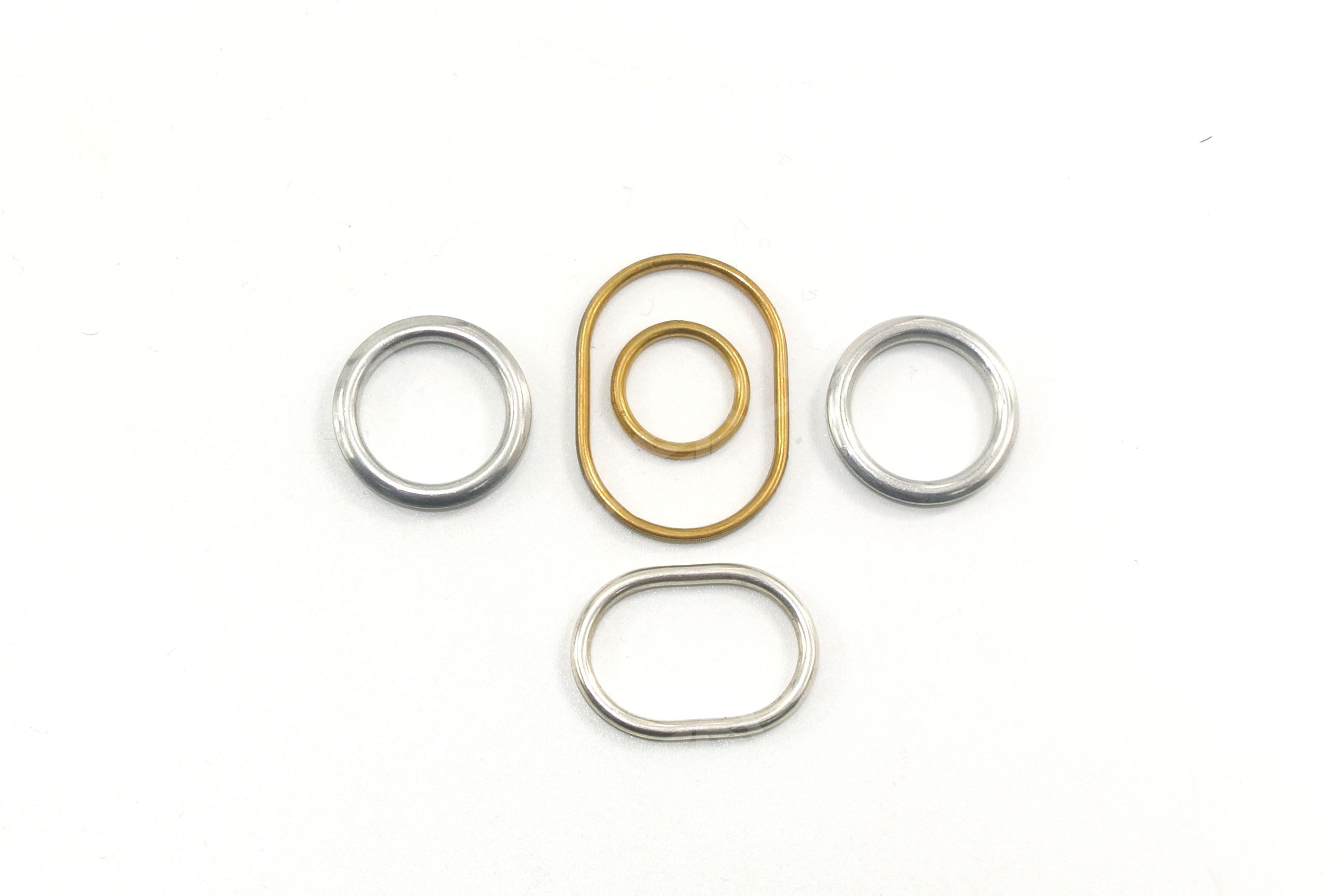In hydraulic systems, aerospace equipment and even household water purifiers, O-rings and X-rings are the most common elastic sealing elements. Although both are annular seals, there are significant differences in structural mechanics, working condition adaptability and failure modes. This article provides an accurate selection guide for engineering design by comparing 8 sets of core parameters.
1. Differences in structural characteristics and sealing mechanisms
Features O-ring X-ring (star ring)
Cross-section shape Standard circular Four-lip symmetrical X-shaped
Sealing principle Radial compression produces contact stress Multi-line contact + pressure self-tightening double seal
Typical size Inner diameter Φ3~500mm, wire diameter 1~10mm Inner diameter Φ10~300mm, wire diameter 2~15mm
Core differences:
O-ring: single-point compression deformation, relying on interference (usually 15%~30%) to form a seal;
X-ring: four sealing lips deform independently under pressure to form a redundant sealing interface.
2. Dynamic performance comparison (taking NBR material as an example)
Parameters O-ring X-ring
Friction resistance 0.15~0.3 (dry friction coefficient) 0.08~0.15 (reduced by 40%~50%)
Anti-torsion ability Prone to spiral failure (>5° deflection) Allow ±15° deflection without leakage
Starting torque High (largely affected by compression) Reduced by 30%~60% (multi-lip load sharing effect)
Dynamic life 500,000~1 million reciprocating motions 2 million~5 million reciprocating motions
Engineering value:
X-rings are more suitable for high-frequency reciprocating motions (such as cylinder piston rod seals), which can reduce energy consumption and extend maintenance cycles.
3. Adaptability to extreme working conditions
Scenario O-ring performance X-ring advantages
High pressure (>30MPa) Easy to be squeezed into the gap (requires retaining ring) Four lips support and disperse pressure, and the anti-extrusion ability is increased by 3 times
Vacuum seal Insufficient compression rebound is prone to leakage Multi-level lips form a stepped seal, and the vacuum retention is better
Temperature alternation is prone to compression permanent deformation (>20%) Each lip independently compensates for thermal expansion, and the deformation rate is <10%
Vibration environment Large contact stress fluctuations and easy to loosen Multi-lip damping effect, amplitude attenuation of more than 50%
Typical cases:
Spacecraft hydraulic actuators use X-rings, which can withstand temperature differences of -65℃~150℃ and 20G vibration;
Deep-sea valves use O-ring + PTFE retaining ring combination to cope with 100MPa hydrostatic pressure.
4. Material selection and economic analysis
Material O-ring adaptability X-ring adaptability
Fluororubber (FKM) Temperature resistance -20℃~200℃, cost ¥5~15/piece Requires higher rebound rate, cost ¥20~50/piece
Silicone rubber (VMQ) Easy to tear, use with caution in dynamic sealing Four-lip structure compensates strength, better applicability
Polyurethane (PU) Wear-resistant but poor hydrolysis resistance High hardness (90 Shore A) More stable
Cost comparison:
The mold fee of X-ring is 2~3 times that of O-ring (precision lip processing), but the unit price difference of mass production can be narrowed to 1.5 times;
In high-pressure and long-life scenarios, the full life cycle cost of X-ring is 40%~60% lower.
5. Selection decision tree
O-ring is preferred:
Static sealing and pressure <15MPa;
Cost-sensitive projects;
Limited installation space (small radial size).
X-rings are preferred:
Dynamic reciprocating frequency > 1Hz;
Working pressure > 20MPa or pressure shock;
Must withstand multi-directional vibration or deflection.
VI. Installation and failure prevention points
Links Key control items for O-rings Special requirements for X-rings
Groove design Width-to-depth ratio 1.3~1.5, roughness Ra≤0.8μm Increase guide angle (15°~30°) to prevent lip flipping
Lubricant Silicone grease or fluorine grease Low viscosity grease (ISO VG32 or less) must be used
Common failures Extrusion rupture (accounting for more than 60%) Uneven lip wear (regular rotation position is required)
Innovative process:
O-ring: MoS₂ coating is sprayed on the surface, and the friction coefficient is reduced to 0.05;
X-ring: Laser engraved micro-textured oil reservoir, lubrication retention time is extended by 3 times.
Conclusion: From structural differences to scene adaptation
O-rings dominate the conventional sealing field with simplicity and reliability, while X-rings achieve technological breakthroughs in high-pressure and dynamic scenes with the synergistic effect of multiple lips. In the future, with the application of topological optimization design and smart materials (such as self-healing elastomers), the performance boundary between the two will be further blurred, but the core concept difference between “single interface compression” and “multi-level redundant sealing” will still dominate the selection logic. Engineers need to closely follow the pressure peak, movement frequency and medium characteristics in the working condition spectrum to find the best balance between cost and reliability.
Post time: Mar-10-2025

